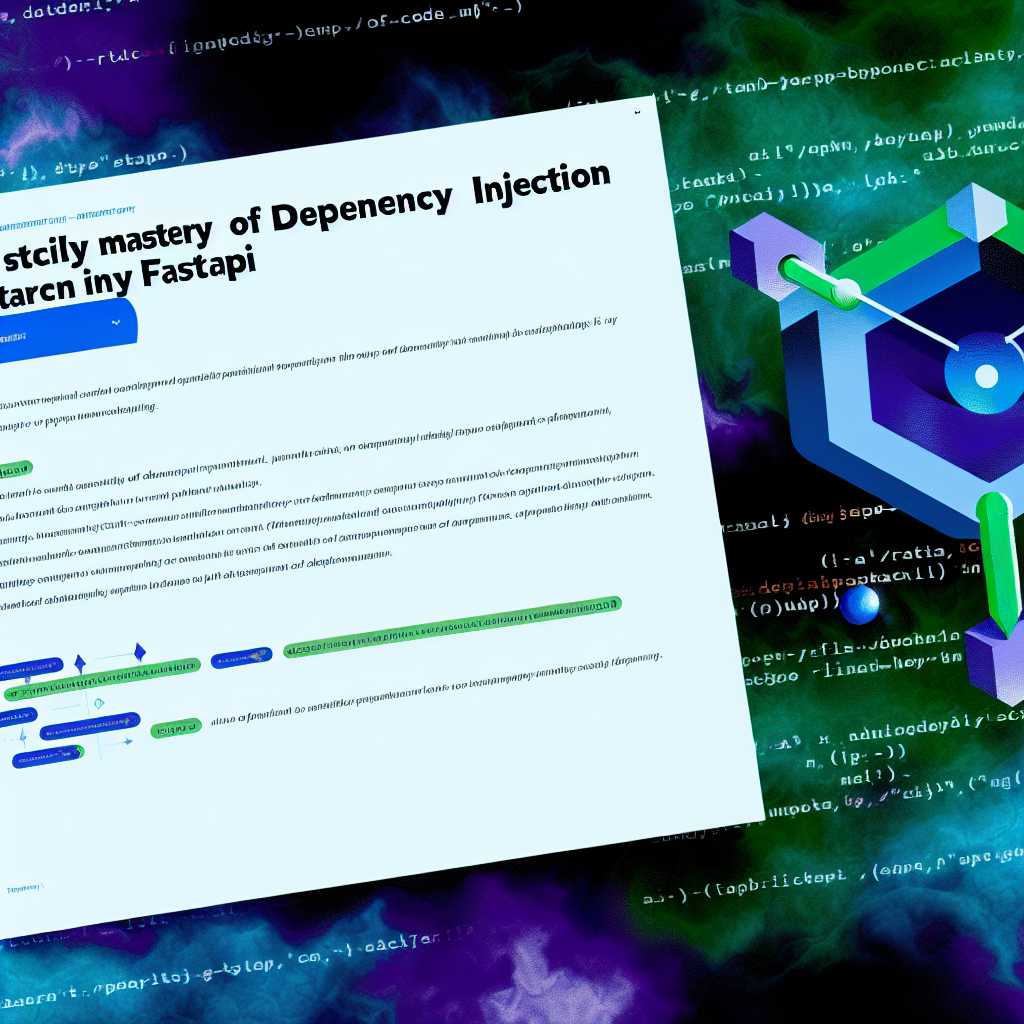Introduction
FastAPI is renowned for its high performance and intuitive API design, which leverages Python’s type hints heavily. One of the most powerful features FastAPI offers is Dependency Injection. This feature helps structure your application with separate and testable components, facilitates code reuse, and enhances dependency management.
What is Dependency Injection?
Dependency Injection (DI) is a technique where you provide the dependencies of a class or function at runtime rather than at compile time. It allows a higher level of flexibility and decoupling in your code. In FastAPI, DI is applied through its dependency declaration system that uses Python’s standard type hints to inject dependencies automatically.
The Basics of Dependency Injection in FastAPI
In FastAPI, you can use the Depends function to declare a dependency. Here’s a simple example to help you understand how it works:
from fastapi import FastAPI, Depends
app = FastAPI()
def common_parameters(q: str = None, skip: int = 0, limit: int = 10):
return {"q": q, "skip": skip, "limit": limit}
@app.get("/items/")
async def read_items(commons: dict = Depends(common_parameters)):
return commons
In this snippet, common_parameters is a reusable dependency function that you can inject into any endpoint using Depends.
Advanced Usage
FastAPI supports more advanced DI features, such as:
Sub-dependencies
Dependencies can have their own dependencies:
from fastapi import Header
async def verify_token(x_token: str = Header(...)):
if x_token != "expected-token":
raise HTTPException(status_code=400, detail="Invalid X-Token header")
@app.get("/secure-items/")
async def secure_items(token: str = Depends(verify_token)):
return {"message": "Successfully accessed secure items."}
Class-based Dependencies
You can also use classes for dependencies, which is useful for managing state across requests:
class CommonQueryParams:
def __init__(self, q: str = None, skip: int = 0, limit: int = 10):
self.q = q
self.skip = skip
self.limit = limit
@app.get("/class-based-items/")
async def read_items(commons: CommonQueryParams = Depends()):
return commons
Benefits of Using Dependency Injection
- Reusability: Write once, use across multiple endpoints.
- Single Responsibility Principle (SRP): Dependencies can cleanly separate concerns.
- Testability: Allows easier mocking and testing as complex dependencies can easily be swapped.
- Scalability: Encourages a clean structure, making codebases more maintainable.
Conclusion
Effective use of Dependency Injection in FastAPI can greatly enhance the maintainability and scalability of your web applications. By embracing DI, you unlock the potential for better organized, cleaner, and efficient code architecture. Whether you are a seasoned developer or a beginner just starting with FastAPI, understanding and utilizing DI is crucial for effective software production.
Call to Action
Try integrating dependency injection in your FastAPI applications and see the difference in how you manage code dependencies. For any questions, feel free to reach out or comment below!


Leave a Reply to Fast Eddy Cancel reply